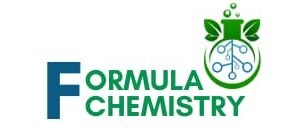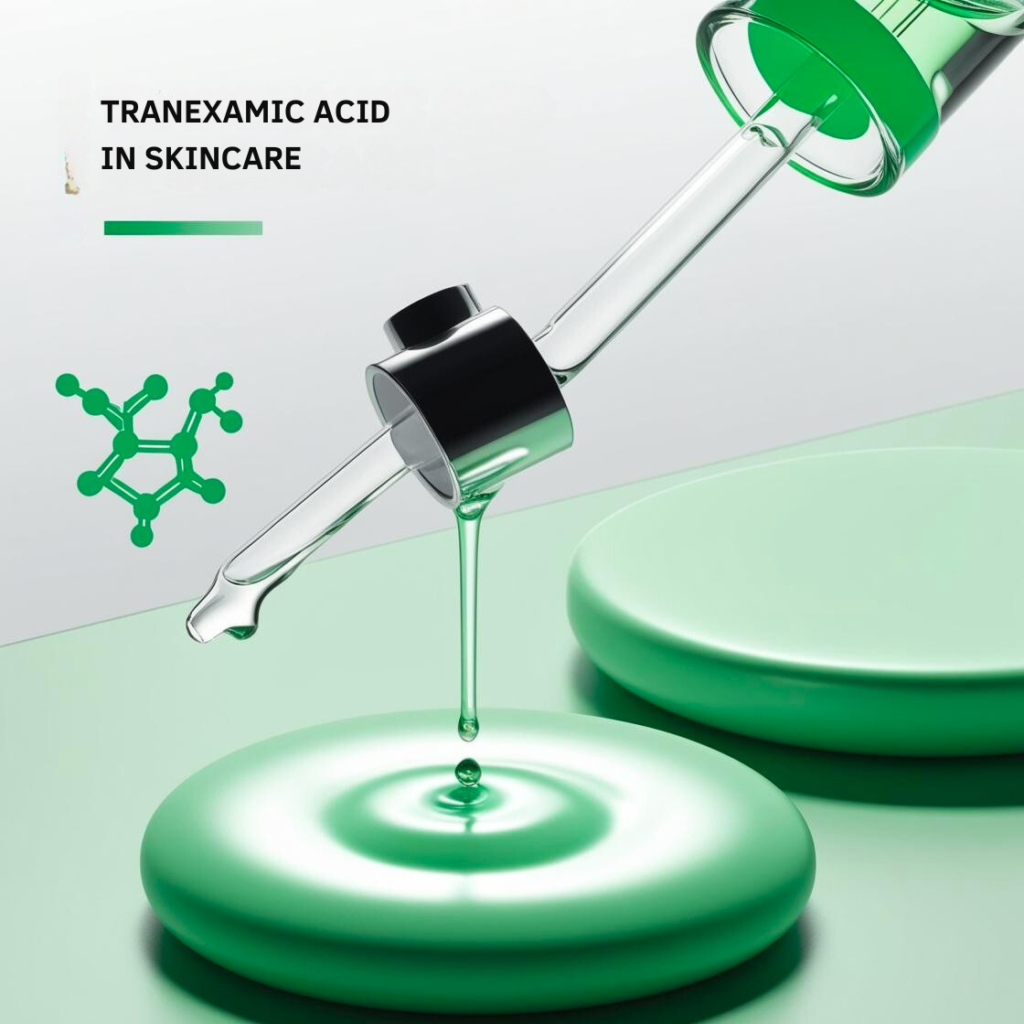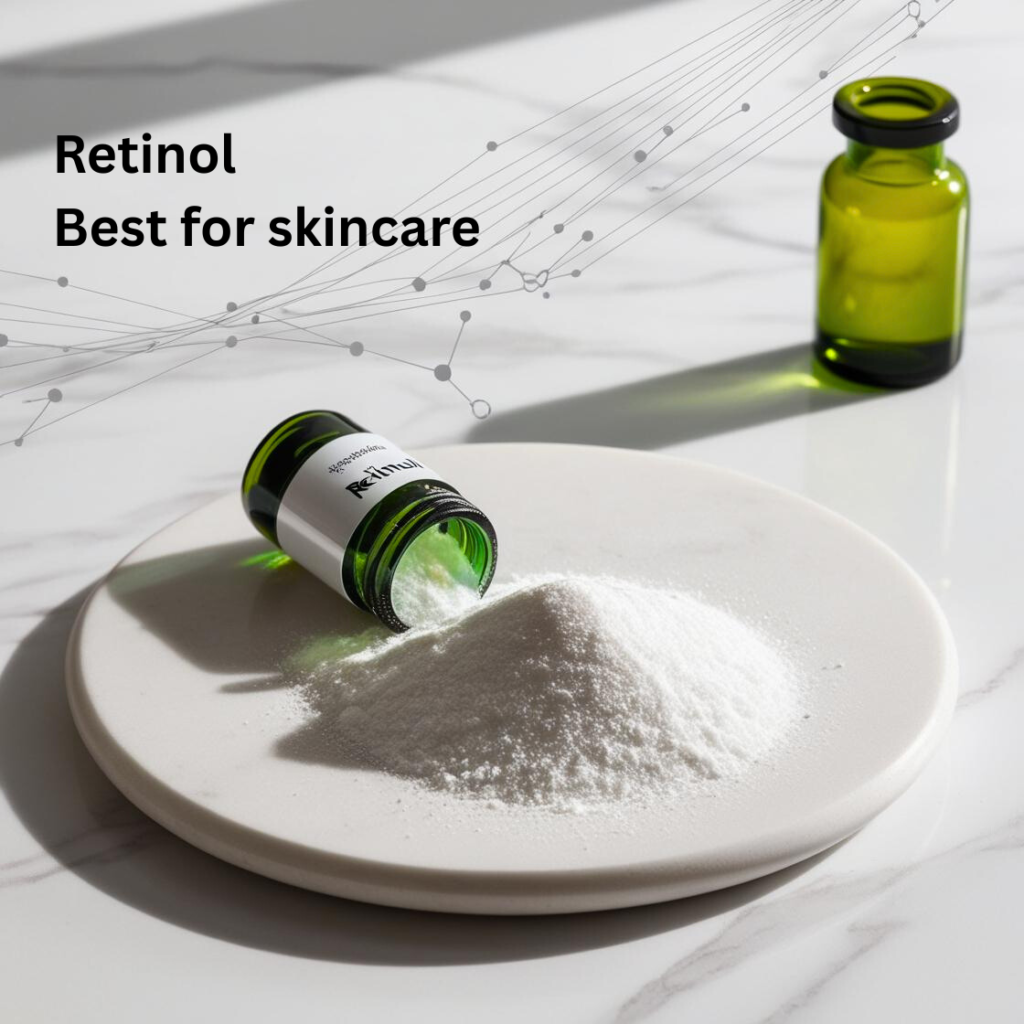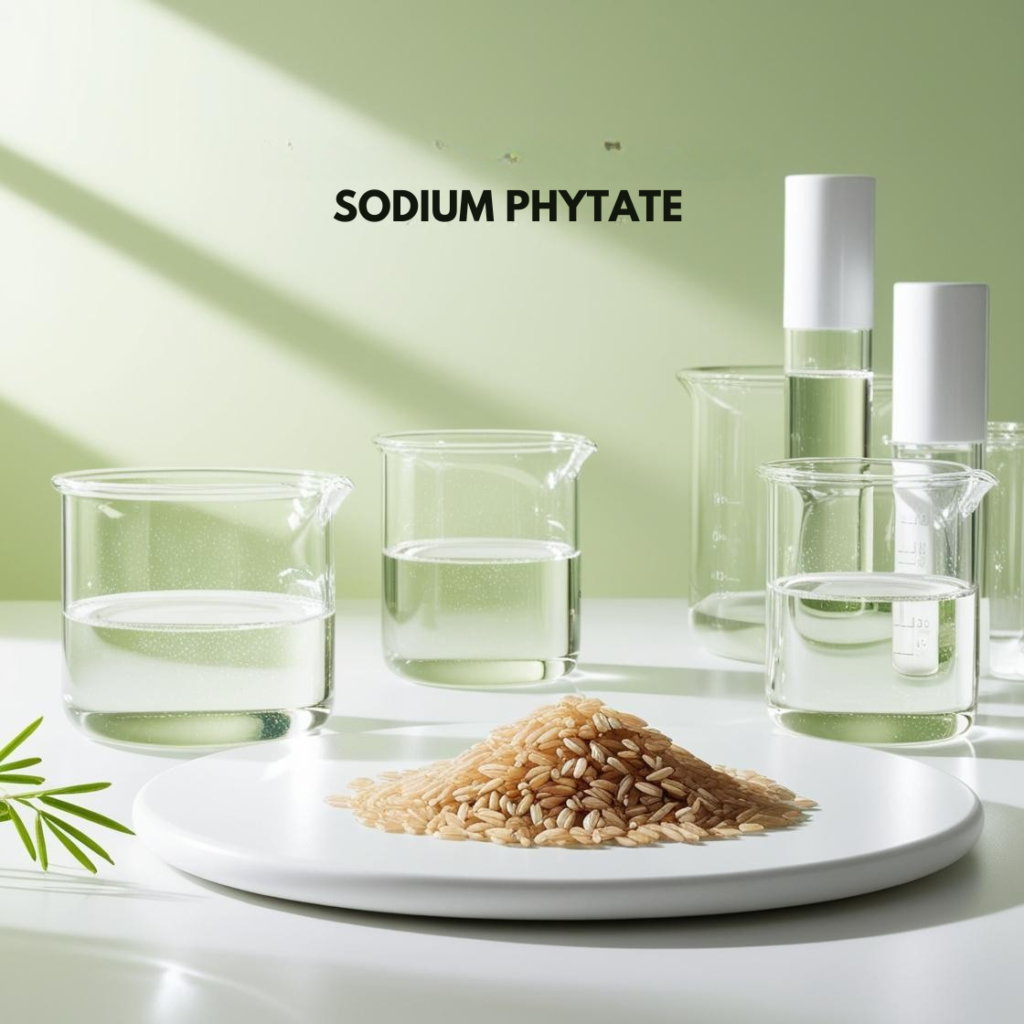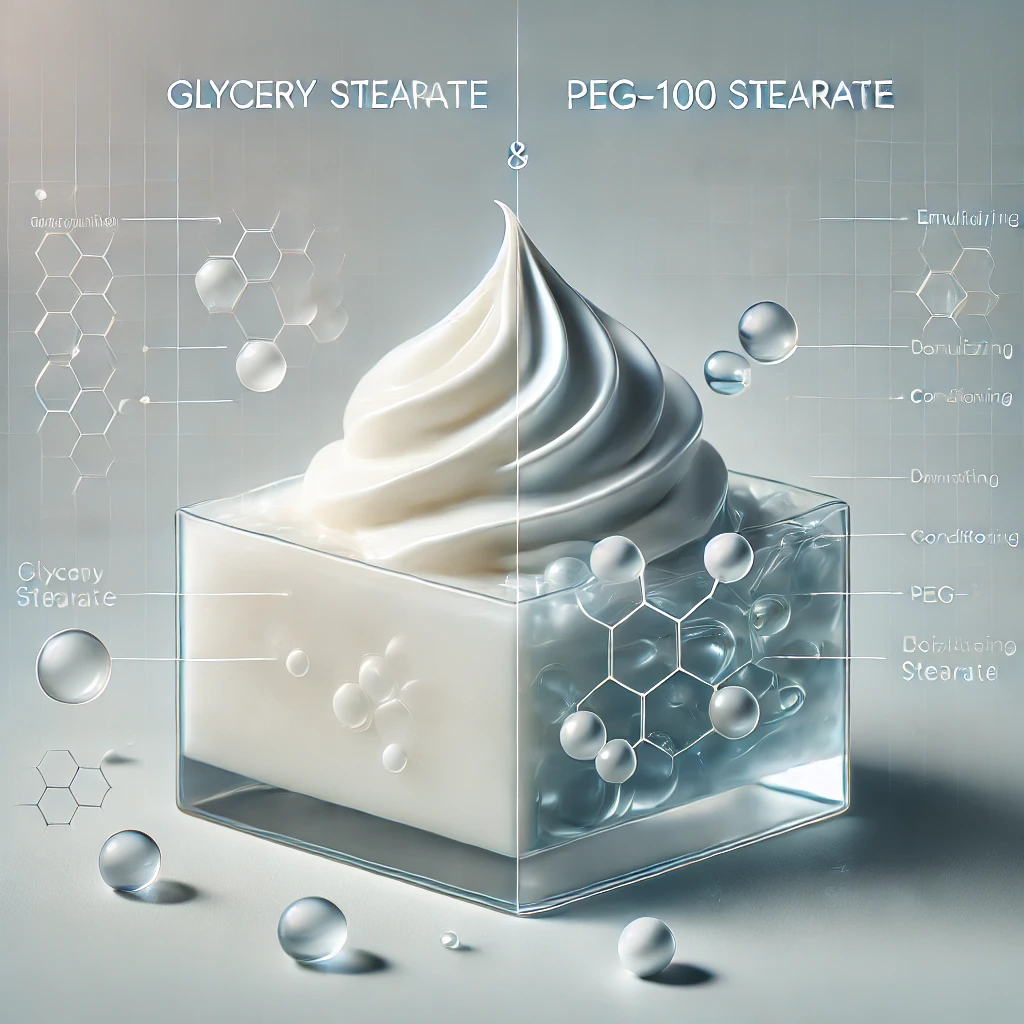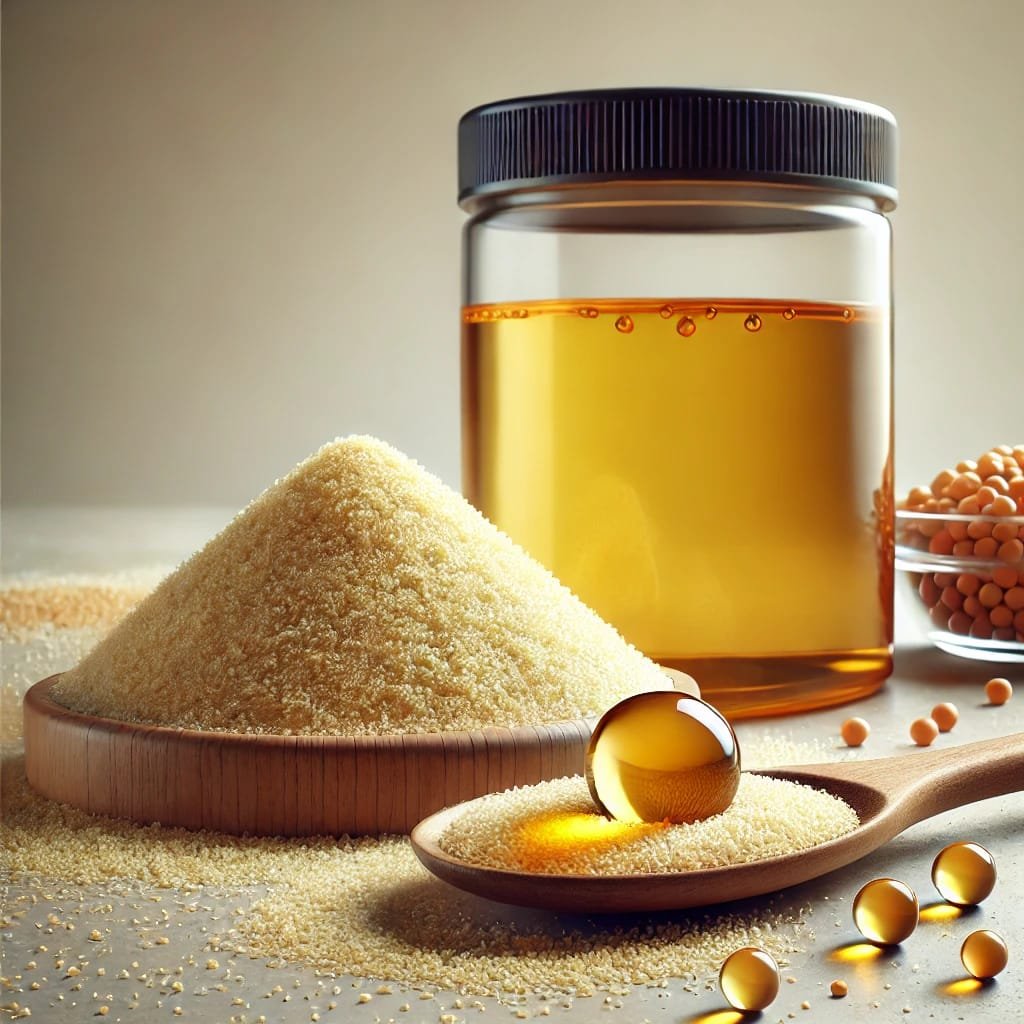CAS number 123-99-9
INCI name Azelaic acid
Azelaic Acid is a dicarboxylic acid derived from wheat, barley, and rye, widely used in skincare for its exfoliating and pore-clearing properties. It helps regulate keratin production, making it effective for acne treatment and skin texture improvement. With anti-inflammatory and antioxidant benefits, it reduces redness and hyperpigmentation. Typically found as a white powder (C9H16O4), Azelaic Acid is used in creams, serums, and spot treatments to promote a clearer, more even complexion.
Purpose
Azelaic Acid serves as both an antioxidant and a masking agent in skincare formulations. As an antioxidant, it helps combat free radicals, reducing oxidative stress that contributes to premature aging, inflammation, and skin damage. Its anti-inflammatory properties further enhance skin health by soothing irritation and redness. Additionally, Azelaic Acid acts as a masking agent, helping to neutralize or minimize unwanted odors in cosmetic formulations, improving the overall sensory experience of skincare products.
Origin
Azelaic Acid is synthesized through ozonolysis, a chemical reaction in which ozone (O₃) breaks the double bond of oleic acid, a monounsaturated fatty acid found in vegetable oils like olive oil. This process, carried out in the presence of a catalyst, transforms oleic acid into azelaic acid, making it suitable for various cosmetic and dermatological applications.

| Feature | Description |
| Name | Azelaic Acid |
| Type | Dicarboxylic Acid |
| Source | Naturally found in grains like wheat, barley, and rye; also synthesized for cosmetic and pharmaceutical use |
| PH | 4.5-5.5 |
| Color | White to off-white |
| Odor | Odorless or slight characteristic odor |
| Physical state | Solid (powder or crystalline form) |
| Solubility | Soluble in water; more soluble in ethanol, dimethyl sulfoxide (DMSO), and propylene glycol |
| Concentration | 10–20% |
| Boiling point | 286°C |
Dual-Action Exfoliation
Unlike traditional exfoliants like glycolic acid (AHA) or salicylic acid (BHA), which can sometimes be too harsh, Azelaic Acid works in a gentler way. It helps the skin shed dead cells by regulating the production of keratin, a protein that can build up and clog pores. This dual exfoliating and keratolytic action prevents acne formation and promotes a smoother, more refined skin texture without excessive irritation or peeling.
Selective Antibacterial Properties
Azelaic Acid has a unique ability to fight acne-causing bacteria while maintaining the skin’s natural microbiome. It specifically targets Cutibacterium acnes (formerly known as Propionibacterium acnes), the bacteria responsible for breakouts. Unlike traditional antibiotics, which can kill both harmful and beneficial bacteria, Azelaic Acid selectively reduces the growth of acne-causing bacteria without contributing to antibiotic resistance or disrupting the skin’s balance.
Anti-Inflammatory & Redness-Reducing
One of Azelaic Acid’s most valuable benefits is its ability to calm inflammation. It reduces swelling, redness, and irritation associated with conditions like acne and rosacea. In rosacea patients, it helps by minimizing the dilation of blood vessels, which contributes to persistent redness and flushing. Additionally, its anti-inflammatory properties help fade post-inflammatory hyperpigmentation (PIH) left behind after acne heals, leading to a more even skin tone.
Tyrosinase Inhibition for Brightening
Azelaic Acid effectively treats hyperpigmentation by inhibiting the enzyme tyrosinase, which is responsible for melanin production. By slowing melanin synthesis, it gradually fades dark spots, melasma, and sun damage. Unlike hydroquinone, which can be harsh and lead to potential side effects like ochronosis (skin darkening), Azelaic Acid provides a safer, well-tolerated alternative for long-term use.
Non-Photosensitizing
Many active skincare ingredients, such as retinoids and AHAs, make the skin more sensitive to the sun, increasing the risk of sunburn and pigmentation. Azelaic Acid, however, does not cause photosensitivity. This makes it an excellent option for those who need treatment for acne, hyperpigmentation, or rosacea but don’t want to worry about excessive sun damage. While sunscreen is always recommended, Azelaic Acid is safer for daytime use compared to other actives.
Multifunctional & Well-Tolerated
Azelaic Acid serves multiple functions, making it a valuable addition to many skincare routines. It works as an:
- Antioxidant, protecting the skin from oxidative stress and environmental damage.
- Keratolytic agent, promoting cell turnover and preventing clogged pores.
- Anti-inflammatory ingredient, reducing redness and irritation.
Applications of Azelaic Acid
Skincare & Dermatology
- Acne Treatment: Helps reduce acne by exfoliating dead skin cells, unclogging pores, and targeting acne-causing bacteria.
- Rosacea Management: Calms redness, inflammation, and swelling in rosacea-prone skin by reducing blood vessel dilation.
- Hyperpigmentation & Melasma: Fades dark spots and uneven skin tone by inhibiting melanin production, making it effective for post-inflammatory hyperpigmentation (PIH) and melasma.
- Sensitive Skin Care: Provides gentle exfoliation and anti-inflammatory benefits without excessive irritation, making it suitable for reactive skin.
- Sebum Regulation: Helps control excess oil production, reducing shine and breakouts.
Cosmetic Formulations
- Creams & Gels: Found in prescription and over-the-counter acne treatments, rosacea creams, and hyperpigmentation correctors.
- Serums & Spot Treatments: Used in concentrated formulas to target specific skin concerns such as dark spots, acne, or redness.
- Exfoliating Products: Incorporated into mild exfoliants to improve skin texture without excessive peeling.
